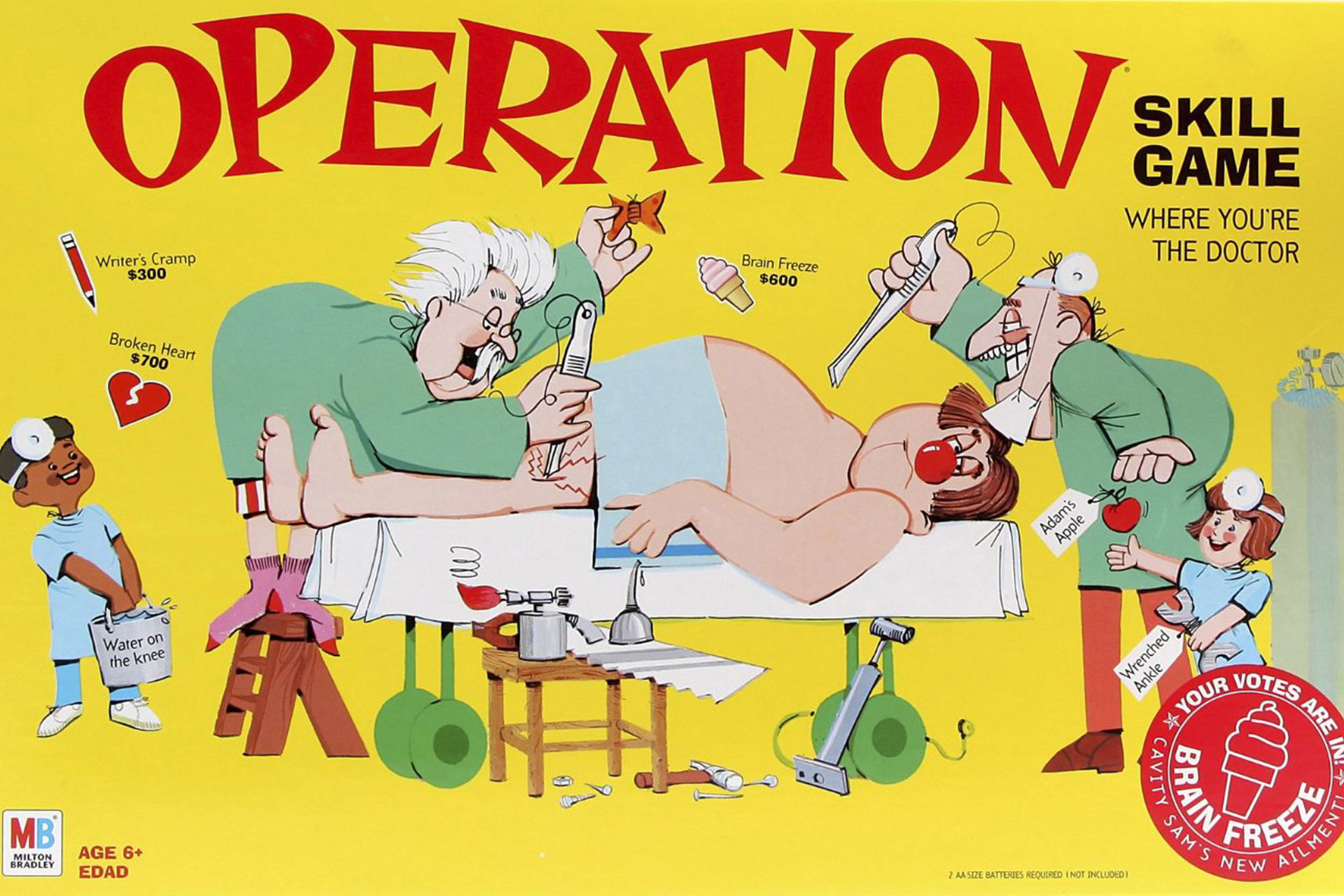A Lesson from Chick-fil-A: Don't Serve Chicken, Serve People
9 min read
Despite growing up on fast food, I try my hardest to provide my family with healthy meal options, which are neither convenient nor easy but I try anyway. However, living life with a toddler is often synonymous with living life in survival mode, and that means sometimes you go with the flow (I’m pretty sure Mama Bear understands, because her porridge was cold).
Recently, date night for my husband and me was fast food and a grocery run, because sometimes that’s as good as it gets. At the last minute, we decided on Chick-fil-A, as it was the closest restaurant to the grocery store (sometimes convenience does win—did I mention my toddler was with us?). I’ll be honest, I was dreading the experience, but our 45-minute dining experience completely changed my perception of this fast food chain.
Every staff member at Chick-fil-A that night was welcoming and helpful, and I mean everyone. Initially, the food options for kids overwhelmed me, but it didn’t take long for a staff member to notice and offer suggestions. Our cashier made the experience feel personal and made unforced eye contact with us throughout the entire ordering process. Those two things alone made me feel better about my decision.
When I mentioned this to a co-worker, he explained an almost identical experience.
“It’s pretty nice for a family to feel welcomed at a restaurant, rather than an inconvenience. Chick-fil-A isn’t the only company trying—they’re just currently the best at it.”
Their hospitality continued even after we ordered. Another staff member offered us a high chair, and surprisingly, it was clean and functional. High chairs are often times the worst part of our public dining experience—they’re questionably sticky, and usually have broken or missing seat belts. The high chairs at Chick-fil-A are none of those things, and each came with a disposable wet nap and plastic placemat that temporarily adhered to the table, making mealtime and clean up much easier on us parents.
It never fails that we forget something once we’re at our table and about to eat. My husband stood up to get us more napkins and that same staff member was there to help. It appeared as though he was making laps around the restaurant, making sure everyone had just what they needed. He was equipped with napkins, straws and silverware.
For those of us with a 2-year old, we know that restaurant child cups are usually a joke. Our son has mastered the sippy cup, but anything with a straw can be a challenge. Chick-fil-A’s solution? Include a bendy straw with every kids meal. Our son was excited because it allowed him to be self-sufficient, and we were excited because we were able to get through supper without a flood of lemonade.
All of that and fresh flowers at our table was quite the treat. To say they made my night is an understatement.
Chick-fil-A, a CUX Leader
That night I thought to myself, “I can’t be the only one who has recognized this.” I guess I live under a rock, because if you Google “Chick-fil-A” and “customer service” you get all sorts of good reads on how this company is leading so many races. (resources listed below)
Recently, Visual Logic attended a local Live2Lead event where Chick-fil-A CEO, Dan Cathy, and local owner, Mitch Edge, both presented. They explained how they’ve grown their business by paying attention to their customers. Dan even said their focus isn’t how many cars they can get through the drive-through or how many sandwiches they sell, but to have a positive influence on all that come in contact with Chick-fil-A. It’s one thing to read about these things, but another to hear them straight from the people behind the counter.
It’s a breath of fresh air to know there are businesses being run this way in our community. They are a great example of how focusing on the details throughout a customer’s journey can make all the difference. Here are just a few of the things that Chick-fil-A has done or is doing to garner such great feedback on their customer experience:
- When launching their new spicy chicken sandwich, they gave away free sandwiches to customers that made online reservations to visit a store at a particular time. The owner of each store received a list of those with reservations, and was able to greet each customer by name, personalizing their experience (for a free sandwich!).
- Chick-fil-A spends over $1 million each year to evaluate their service, conducting focus groups and phone surveys with customers from each restaurant (plus, you can get another free sandwich by participating!). They measure their service on taste, speed, attentiveness and courteousness, and cleanliness. The results are analyzed and each location gets a report on these measures, and how they compare to top performers. They help each franchise know what is working, and what needs improvement.
“Sometimes customers don’t know what they want yet. Our job is to uncover those things and get out ahead of them.”
- Last year, Chick-fil-A opened “Hatch”, an innovation lab where design, service, and new items are explored. This 80,000 square foot think-tank has already made ordering and payment easier and faster, and has developed a new way to grill chicken on a custom, patent-pending grill.
Empathy makes food taste better.
After sharing my experience with a different co-worker, she mentioned that a close friend loves Chick-fil-A too, but for another reason. With four small children she orders at the drive-through, parks and unloads her kids from the car, and enters the restaurant where the staff has everything set up for them. No impatient children, no running around. Chick-fil-A gets this mom’s frustrations and struggles, and through empathetic customer service, they have made her life easier. THEY GET IT.
“My business grew on the understanding that customers are always looking for someone who is dependable, polite and will take care of them.”
When you think of fast-food restaurants of the past, it’s likely the uncomfortable plastic seats, neon lights, and loud environment come to mind. And it should—these kinds of designs were intentional, done to move customers out as quickly as possible, and make room for the next. Chick-fil-A, though, is a disruptor to that old way of thinking. They’ve established themselves as a great company, and they have a huge following. How does what they’re doing relate to UX, and what can other companies do to help their success?
Our process in disguise.
It might seem like the customer service of a restaurant is far different from what you and your company do, but really, the process that Chick-fil-A has followed is the same as ours (Visual Logic), just in disguise. Each of the things highlighted above can be translated to familiar steps in the UX/CUX process:
1. Personal Touches: Know your users
When you know your users, you’re able to customize your product or service to what they need, want, and understand. Each interaction feels customized, because you’ve taken the time to understand goals, behaviors, and motivations.
2. Fresh Flowers: High-fidelity aesthetics and details
It’s proven that things that look better, work better. We perceive systems, businesses, and spaces as more functional if they are aesthetically pleasing and the details have been considered. This often comes from first designing the right framework, and then putting the finishing touches, the “fresh flowers”, on top.
3. Table Touchpoints: Checking in and addressing issues
When a server visits a table, they will address any issues you may have, and will make sure your experience is ideal. In your business, this may manifest itself as other types of customer touchpoints or services, or for a digital experience, may include user testing of solutions and addressing any issues as design revisions.
4. High Chair Accessories: Accessibility and functionality
It’s one thing for things to look nice, but if they don’t also work well, businesses still struggle and systems still fail. Just as important as aesthetics is the usefulness and usability of your experience. Helpful high chair accessories at Chick-fil-A may equate to cupholders on grocery carts for others or special features for others.
Just as important as aesthetics is the usefulness and usability of your experience.
5. Bendy Straws: Delight
A bendy straw might seem like fun for a child, but it’s also a useful tool for parents who have seen too many tips and spills first-hand. It’s important to remember that what might be a tool, can also be fun and enjoyable as well. These are opportunities to delight your (sometimes tiny) customers, while also sparking delight for those who recognize the special touch of a helpful tool.
How to apply the Chick-fil-A Lesson to your business.
While it might be challenging to see some of the parallels to your product or service, a good customer experience comes back to knowing your users, designing the right framework and styling it correctly, making revisions where necessary, and making sure your experience is useful, usable, and desirable.
When asked about how Chick-fil-A does what it does so well, Kristen Hunter, a marketing consultant with Chick-fil-A, says the chain uses what they call “second mile service”.
“The first mile is the foundation—good customer service, hot food hot, cold food cold. The second mile is what we do that’s remarkable, like carrying people’s trays to their tables.”
In thinking about what you can do for your customers, think about your primary strengths, and then add that second mile service via an excellent customer experience. By focusing on CUX, you’ll create a strong brand, and as a result, brand ambassadors who will advocate for your business.
In your business, you might not be handing out bendy straws to your customers, but the UX/CUX processes can help you figure out what your “bendy straw” might be. By applying this process to your business you’ll increase user adoption, retention, and loyalty. With competition what it is today, a great experience is what will set you apart.
Resources:
- https://www.qsrmagazine.com/promotions/details-matter
- https://www.fastcompany.com/resources/customer/chickfila.html
- http://www.forbes.com/sites/scottdavis/2013/12/16/chick-fil-as-raving-fans-growth-strategy/#728c23f07ce3
- http://www.nunwood.com/chick-fil-look-customer-experience-strategy-uss-leading-restaurant-fast-food-brand/






